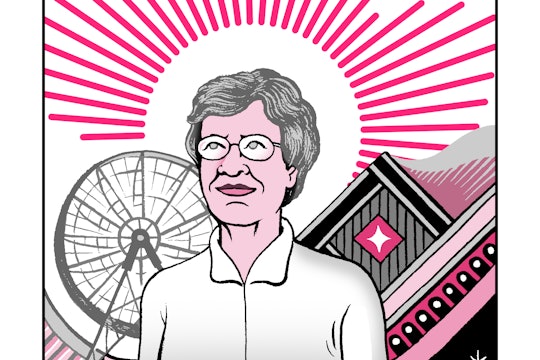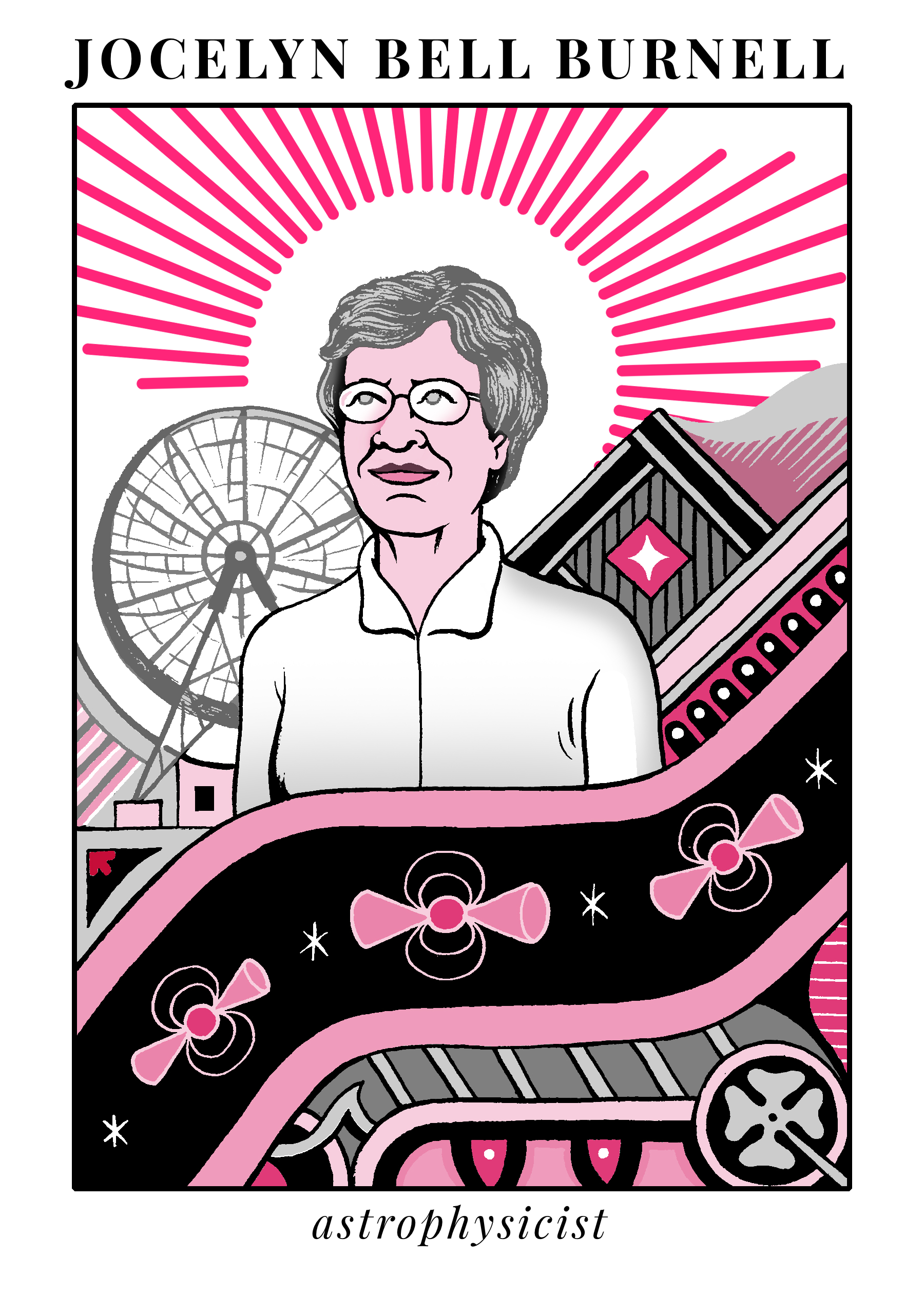
Matteo Farinella
Meet Jocelyn Bell Burnell, the astrophysicist who first noticed pulsars
Through sheer tenacity she has forged a career in a male-dominated field
Imagine squeezing the entire population of the world into a thimble. That is how dense a pulsar is – a small spinning star, which forms from the collapsed core of a large star, like the sun. The discovery of these celestial objects was one of the most important astronomy discoveries of the 20th century, providing the strongest confirmation yet of Einstein's general theory of relativity. This discovery earned a 1974 Nobel Prize, which was not shared with Jocelyn Bell Burnell, the woman who discovered it.
In the male-dominated field of physics, Burnell, who was born in Belfast in 1943, has won countless awards, became a Dame of the British Empire in 2007 and, shortly after, was appointed as the first female president of the Institute of Physics. Not bad for a woman once described as "meek" by a male colleague.
Looking closely at the cosmos
It all began at Glasgow university, where she studied physics, the only female in her class during a time when it was an accepted tradition for the male students to stamp their feet when a woman entered the room. After achieving her bachelors in 1965, she went on to pursue a PhD in radio astronomy at the University of Cambridge.

Matteo Farinella
As part of her PhD under the supervision of Anthony Hewish and Martin Ryle, Burnell helped to construct a huge radio telescope, the size of 57 tennis courts, designed to measure quasars - rare celestial objects of massive proportions, which emit huge amounts of energy. Following its completion in 1967, Burnell was tasked with analyzing the data produced by the radio telescope. After countless hours looking at charts, she spotted a quarter-inch smudge on a graph hidden within three miles of printed paper charts that didn't fit the patterns usually produced by quasars. When she reported the anomaly to Hewish, he dismissed it, insisting that it could only be man-made interference.
But Burnell, a conscientious, thorough and pedantic 24 year old, couldn't let it go. She had to understand why she was seeing the signal. Slightly anxious about the fact that she herself had been responsible for connecting up the 125 miles of wires and cables and could have made a mistake, she spent months repeating tests to convince Hewish of her findings.
It turns out that she hadn't made a mistake: in fact, she went on to find a second, third, and fourth pulsar. Thanks to her curiosity, we now know that when big stars reach the end of their life and their outer layers explode into a supernova, they do not disappear into space but rather, their core becomes compressed in the explosion to form small neutron stars called pulsars (aka White Dwarfs). Pulsars spin at immense speeds, sending out beams of electromagnetic radiation, which can be detected when they are facing the earth - and this is what the telescope picked up.
In 1968, their findings were published in the journal Nature, but the resulting attention was bittersweet. In one interview, Burnell recalls an article entitled "Girl Discovers Little Green Men", featuring her vital statistics, height, chest, waist and hip measurements. "They did not know what to do with a young female scientist," she says.
That's been a theme of her long career – between discovering the second and third pulsars, Jocelyn Bell had become engaged to Martin Burnell, a recent Cambridge graduate who had taken a job on the south coast of England. They married just before her PhD thesis defense, then Burnell did what was expected of a wife: she moved to where her husband was and gave up work to concentrate on starting a family.
It didn't take her long to realize that giving up work to stay home and look after a baby was not for her. She decided to start working again part time in order to keep her career afloat, believing that she could have a career and a family. But, for the next 20 years, that career would be governed by the location of her husband's job first and her research interests second. With few role models and no mentor, Burnell was very much on her own.
A Nobel denied
In 1974, the Nobel Prize for Physics went to her PhD supervisor, Anthony Hewish, and department head Martin Ryle for their role in the discovery of pulsars. Burnell, who had just had a child and was working part-time at the university of Southampton studying and teaching a different branch of astrophysics, was not included in the prize. This caused a lot of controversy in the field at the time, with many academics objecting that Burnell should have been honored alongside Hewish and Ryle – without her attention to detail and persistence, that initial anomaly may have never been caught or taken seriously. Hewish responding by saying: "I mean, my analogy really is a little bit like when you plan a ship of discovery and you go off and somebody up the mast head says 'land-ho,' that's great, but who actually inspired it and conceived it and decided what to do when and so on... there is a difference between skipper and crew"
Burnell herself professed to be unfazed by the oversight, saying that being robbed of a Nobel put her in good company.
Beyond the Prize
In interviews, Jocelyn Bell Burnell is humble, gracious, and even good humored when she is asked about missing out on the Nobel Prize. Looking at her list of awards and long career, it is easy to see why. Making the most of of her first job out of Cambridge in 1968, a teaching fellow position at the university of Southampton that was not initially the best fit, Burnell spent five years learning how to teach and forging her own research interests before becoming a professor at University College London (UCL), where she spent almost 10 years. She also made other important contributions to astrophysics, including work on Cygnus X-3, a star system that represents one of the brightest sources of x-radiation in the sky.
Over the years Burnell has held many important positions, making her one of the most respected university educators in the world. She has been a physics professor at the Open University, a visiting professor at Princeton, and dean of science at the University of Bath. She is currently a visiting professor of astrophysics at the University of Oxford.
She is also a fellow of The Royal Society – very few women are given this honor – and was the first female president of the Institute of Physics (2008-2010).
Burnell is a science hero in many ways, not only for her massive contribution to the field of physics but for the tremendous grit she had to demonstrate in the pursuit of a career not designed for women. Should someone ever turn her into a comic book science hero, 'Badass Bell Burnell' would be a fitting name.
